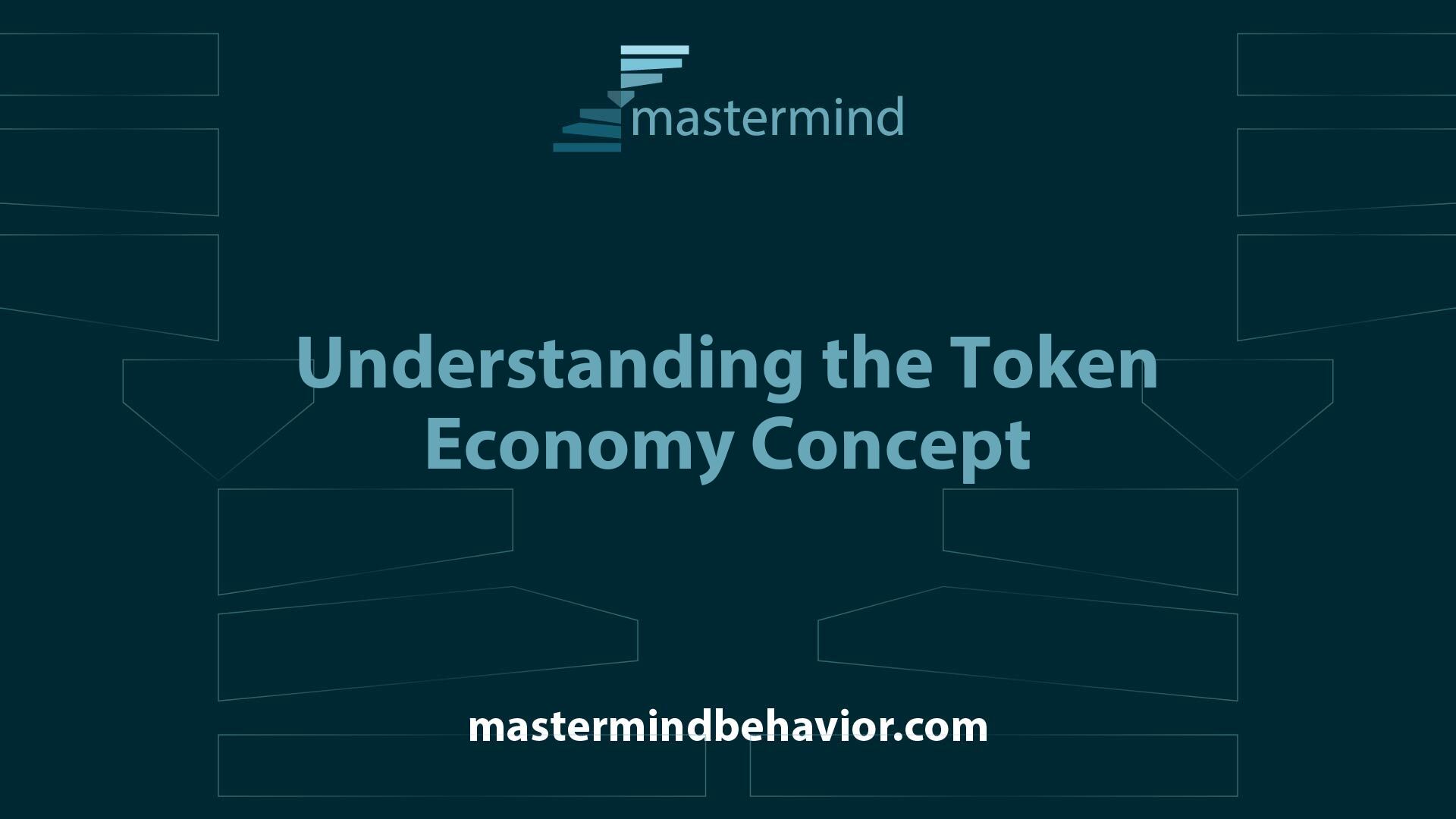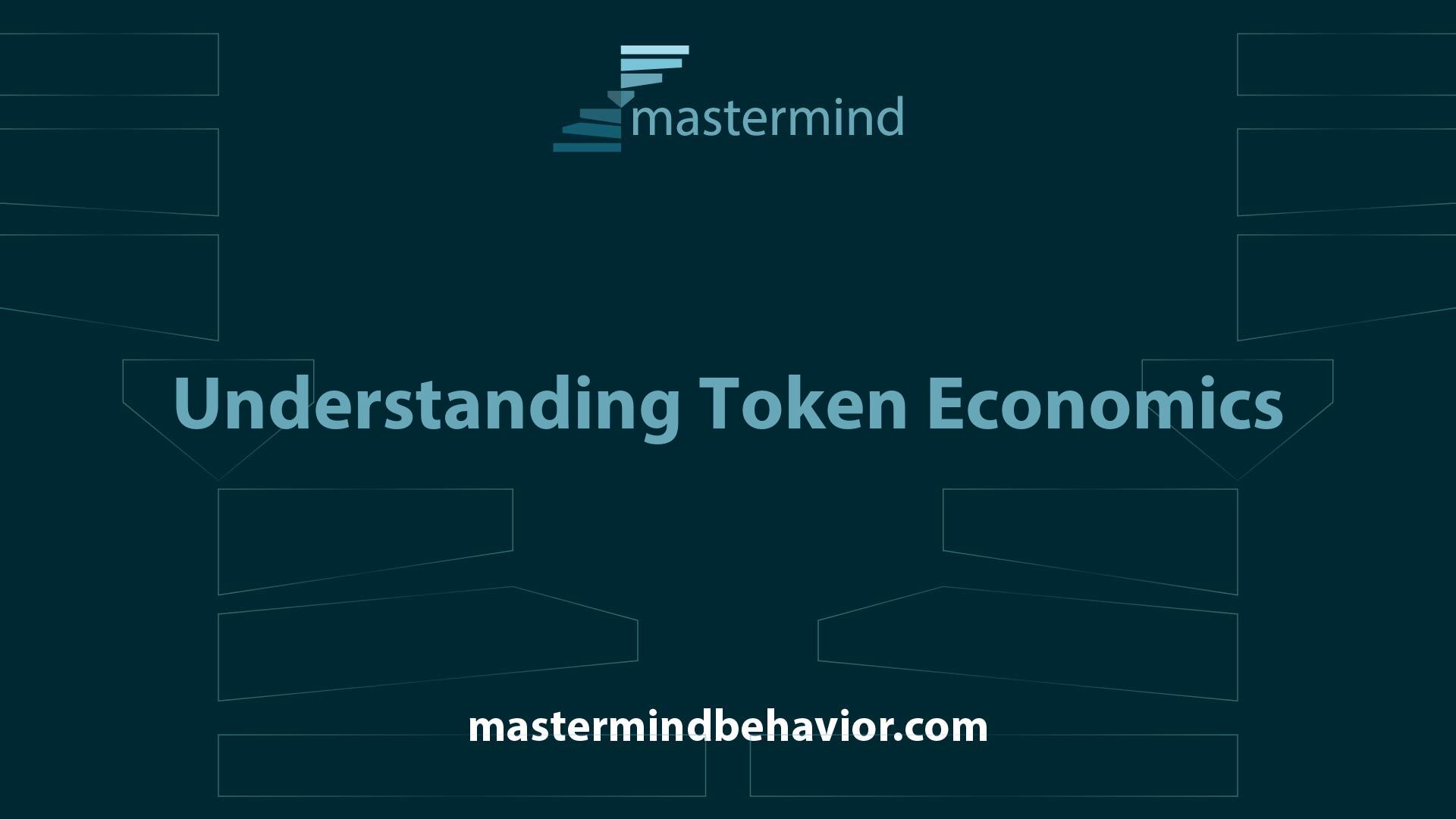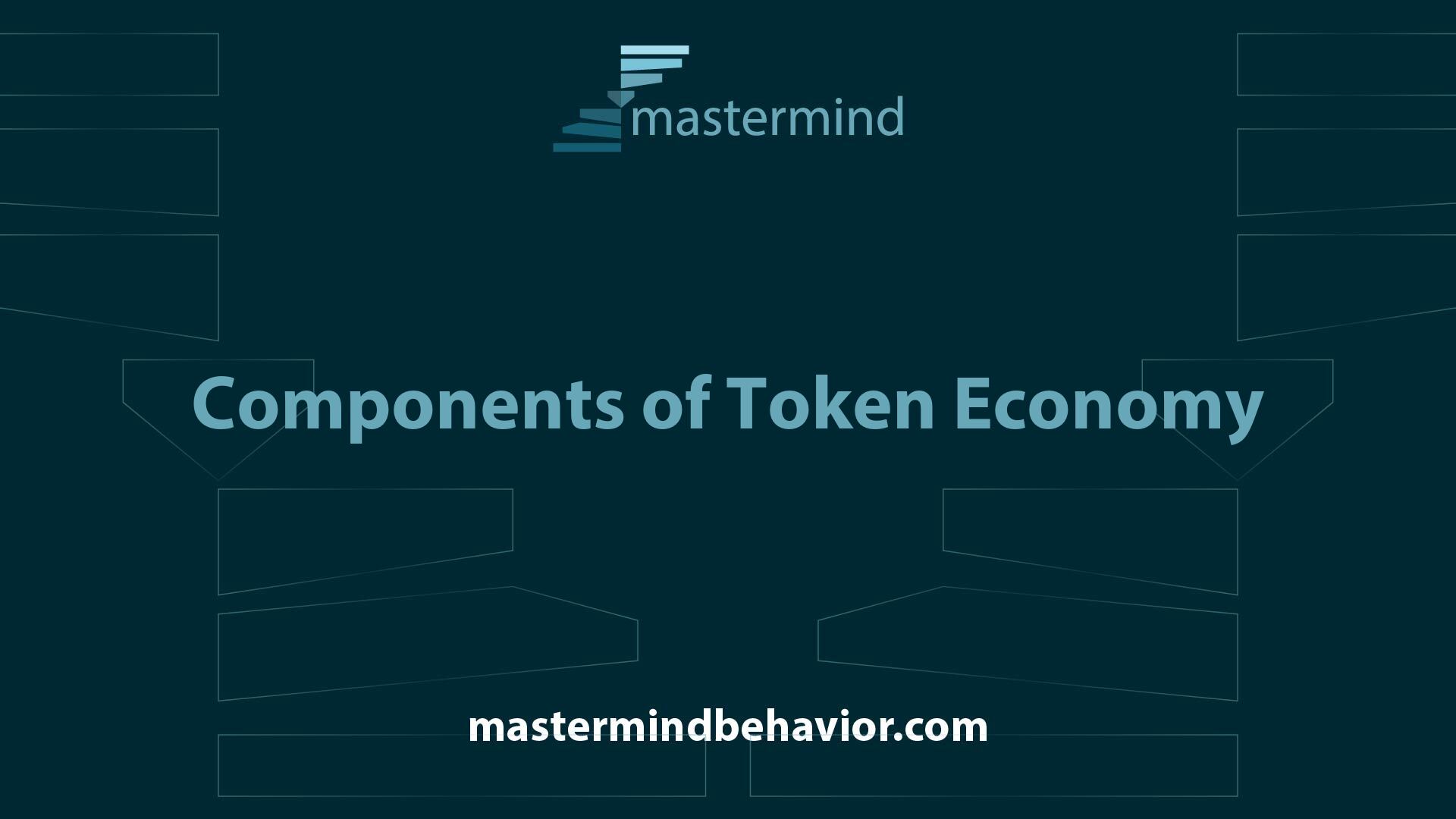Understanding the Token Economy Concept


Understanding Token Economics
The concept of token economics is derived from the use of tokens as representations of value across various systems, leading to structured approaches in behavior modification and economic interactions.
Origins of Tokens
Tokens have a rich history, first appearing as clay coins during the transition from nomadic hunter-gather societies to agricultural societies. This shift indicated a movement towards more complex economic systems, moving beyond simple barter economies. Historical applications of tokens have included a variety of forms, such as casino chips, vouchers, gift cards, and stock certificates.
In contemporary times, digital tokens have emerged, managed by blockchain networks, which can represent assets, access rights, and collective goals [2]. This evolution has broadened the scope of token economics, integrating both historical and digital paradigms into modern applications.
Token TypeHistorical ExamplesModern ExamplesPhysical TokensClay coins, vouchersCasino chips, gift cardsDigital TokensN/ABitcoin, protocol tokensRepresentationalBarter itemsStock certificates, NFTs
Purpose of Tokens
The primary purpose of tokens is to incentivize individual behavior or contribute to collective goals. Tokens can be purpose-driven, much like Bitcoin and other protocol tokens, representing a new method of value creation. They serve as rewards or loyalty points that encourage specific behaviors beneficial to a group.
Research has shown that token economies are effective in enhancing desirable behaviors and improving task performance, particularly among individuals with autism spectrum disorder (ASD) and other developmental disabilities. By creating a tangible link between positive behavior and rewards, tokens reinforce desired actions and promote their repetition.
Additionally, tokenomics encompasses the study of phenomena as applied to cryptocurrencies, reflecting how people manage digital assets in blockchain systems. A token is thus defined as a cryptographic unit of value, representing real assets, such as art, books, and tickets.
The integration of tokens into economic structures provides a versatile approach to behavior management and economic interaction, laying the foundation for further developments within the token economy framework.

Components of Token Economy
Understanding the various components of a token economy is essential for its effective implementation. This section will explore the different types of tokens used in such systems and distinguish between physical and non-physical tokens.
Types of Tokens
Tokens serve as a form of currency within the token economy, allowing individuals to earn rewards for demonstrating desired behaviors. Common types of tokens include points, stars, stickers, chips, and coins. These tokens can be exchanged for various rewards or privileges, reinforcing positive behaviors through the principles of operant conditioning Brighter Strides ABA. Research indicates that incorporating tokens related to the learner's specific interests can enhance the effectiveness of the token economy Master ABA.
Type of TokenDescriptionPointsNon-physical units that can be accumulated over time.StarsOften used in educational settings as a visual representation of achievement.StickersPhysical tokens that can be collected and exchanged for rewards.ChipsPhysical items similar to poker chips, often used in structured programs.CoinsTangible currency, sometimes used in broader therapy and reinforcement systems.
Physical vs. Non-Physical Tokens
Tokens in a token economy can be categorized as either physical or non-physical. Physical tokens can include poker chips, printed cards, or marbles. These tangible items provide a clear and immediate form of reinforcement that individuals can see and hold. Conversely, non-physical tokens may include ticks on a sheet of paper or stamps on a card, which are often referred to simply as "points" ABA Therapist Jobs.
Token TypeCategoryExamplesPhysicalConcretePoker chips, coins, stickers, ticketsNon-PhysicalAbstractPoints, ticks on paper, stamps on cards
Both forms of tokens can serve effectively in various environments, from educational settings to therapy sessions, by encouraging positive behavior and skill development My Team ABA.
Implementing Token Economy
The implementation of a token economy requires understanding specific strategies that enhance its effectiveness. Two critical strategies within this framework are response cost strategies and conditioned reinforcement.
Response Cost Strategies
Response cost strategies involve deducting tokens as a consequence for breaking rules or displaying inappropriate behaviors. This method serves as a penalty or fine designed to correct undesirable actions. It is important for educators and clinicians to employ response cost judiciously, reserving it primarily for addressing major behavioral issues. Additionally, it should always be used in conjunction with positive reinforcement to encourage desirable behavior, ensuring that it does not occur when a child has no tokens to lose [1].
Behavior TypeToken DeductionNotesMinor Rule Violation1 TokenUse sparingly to avoid frustrationMajor Rule Violation2-3 TokensEmphasize the importance of rulesInappropriate Behavior1-5 TokensAlign deductions with severity
Conditioned Reinforcement
Conditioned reinforcement refers to the use of tokens as generalized reinforcers within the token economy. Tokens can be exchanged for backup reinforcers—items or activities that the learner finds reinforcing [5]. When children earn tokens for desired behaviors and can later trade them for things they value, it creates an incentive to repeat those behaviors. This system is applicable across various settings, including schools, homes, summer camps, and treatment programs, reinforcing a broad range of behaviors.
Effects of conditioned reinforcement can be summarized in the following table:
Token Reward SystemExample TokensExchange ValuePoints10 Points for a toyHigh-value exchangeStars5 Stars for extra playtimeMedium-value exchangeChips1 Chip for a snackLow-value exchange
This structure not only supports positive behavior change but also helps learners understand the value of tokens and what they can achieve through appropriate actions. By ensuring the reinforcers associated with tokens are meaningful and desirable, the token economy can increase motivation and engagement among participants, leading to improved outcomes [6].
Benefits of Token Economy
Exploring the advantages of the token economy system reveals its versatility and effectiveness in behavior reinforcement. The benefits are notable in their ability to reinforce diverse behaviors and promote intrinsic motivation among individuals.
Reinforcing Diverse Behaviors
The token economy serves as a powerful reinforcement strategy in Applied Behavior Analysis (ABA). It allows for generalized reinforcers, or tokens, to be exchanged for backup reinforcers, which supports a variety of behaviors across different settings. This flexibility enables the reinforcement of essential skills such as academics, communication, self-help, and prosocial behavior, which can cater to the unique needs of learners and interventionists alike.
The table below illustrates different behaviors that can be reinforced using a token economy system:
Behavior TypeExamplesAcademic SkillsCompleting homework, participating in class discussionsCommunicationInitiating conversations, using polite languageSelf-Help SkillsDressing independently, following hygiene routinesProsocial BehaviorSharing, cooperating in group activities
Implementing a token economy fosters a structured environment, ensuring that desired behaviors are reinforced systematically. This not only enhances the learning experience but also leads to improved generalization and maintenance of these behaviors over time [7].
Intrinsic Motivation Development
In addition to reinforcing specific behaviors, the token economy also contributes to the development of intrinsic motivation. The structured reward system encourages individuals to engage in positive behaviors for the inherent satisfaction of accomplishing tasks, rather than solely for external rewards.
By allowing individuals to work toward obtaining tokens, a sense of achievement and personal fulfillment can arise. Over time, this can shift motivation from extrinsic to intrinsic, where individuals become more self-directed in their learning and behavior.
Token economies employ principles of operant conditioning, promoting behaviors that are not just desirable but also sustained over time. This systematic approach helps individuals internalize the value of positive behaviors and fosters a greater sense of self-motivation [3].
Overall, the token economy is an effective method to reinforce a wide array of behaviors while encouraging intrinsic motivation, proving advantageous for both learners and facilitators.
Optimizing Token Systems
Optimizing token systems enhances the effectiveness of the token economy in promoting desired behaviors and skills in various settings. Two essential aspects of this optimization are structured reinforcement and thinning reinforcement schedules.
Structured Reinforcement
Structured reinforcement is a crucial component of a successful token economy. It involves creating a clear and organized system where tokens are provided for specific behaviors. This setup fosters an environment with defined expectations and predictable reinforcement, allowing individuals to understand what is required to earn tokens.
The use of a structured approach helps to reinforce a wide range of behaviors, including academic skills, communication, self-help, and prosocial actions [8]. Below is a sample table illustrating how different behaviors can be linked to token rewards:
BehaviorTokens EarnedCompleting homework2Asking for help appropriately1Helping peers in a group activity3Displaying kindness2
Such structured methods promote consistency and reinforce the desired skills effectively across various settings, such as schools and home environments [5].
Thinning Reinforcement Schedules
Thinning reinforcement schedules refer to the gradual reduction of the frequency at which tokens are provided for specific behaviors. This strategy allows for a manageable way to maintain the effectiveness of the reinforcement without overwhelming the individual. Factors like the understanding of the trade-in value of tokens and the satiation of reinforcers should be considered when thinning a token system.
Utilizing a systematic approach to thinning can help support the long-term maintenance of behaviors, ensuring individuals do not become overly reliant on immediate token rewards. Below is a table illustrating an example of how reinforcement may be thinned:
Initial ScheduleThinned Schedule1 token for every 5 correct answers1 token for every 10 correct answers1 token for every behavior displayed1 token for every 2 behaviors displayed
Implementing a thinning reinforcement schedule effectively maintains enthusiasm for token earning while encouraging self-regulation and independence in achieving the desired behaviors, thus optimizing the token economy system.
Challenges and Considerations
While the token economy system can be an effective behavioral management tool, it is not without its challenges. Two notable issues that can arise during its implementation are generalization issues and fading of rewards.
Generalization Issues
Generalization refers to the ability of individuals to apply learned behaviors in various settings, not just the specific conditions in which they were taught. In a token economy, there is a risk that individuals may become overly reliant on the presence of tokens for motivation and reinforcement. When tokens are removed, these individuals may struggle to demonstrate the desired behaviors without the external incentive.
To address generalization issues, strategies such as gradually reducing reliance on tokens and reinforcing behaviors in more natural settings can be helpful. This might involve practicing behaviors in different environments or using verbal praise as a substitute for tokens in certain situations. By providing opportunities for individuals to apply their skills without the immediate presence of rewards, they are more likely to carry over those behaviors into daily life.
Fading of Rewards
The fading of rewards presents another challenge within the token economy framework. Individuals can develop a dependence on tokens as their primary source of reinforcement, which can undermine intrinsic motivation for the behavior itself. When the token system begins to be diminished or modified, individuals may find it difficult to maintain their motivation if they have not been adequately shifted towards internal satisfaction.
To address this challenge, gradual fading strategies can be employed. This approach involves slowly reducing the number of tokens earned or the frequency of token reinforcement while simultaneously increasing the emphasis on internal rewards, such as feelings of accomplishment, pride, or social acknowledgment. Such a transition can help encourage long-term behavior change and foster a sustainable motivation that is less reliant on external tokens.
In summary, educators and practitioners must remain vigilant about the potential generalization issues and the fading of rewards when implementing a token economy. A personalized and flexible approach tailored to individual responses can help maximize the benefits while minimizing these challenges.
References
[2]:
[3]:
[4]:
[5]:
[6]:
[7]:
[8]:
Recent articles

How to Encourage Imitation Skills in Young Children with ASD
Building Foundations for Success: Strategies to Enhance Imitation in Children with ASD

How Parent Involvement Enhances the Success of ABA Therapy Programs
Maximizing ABA Outcomes through Parental Engagement

The Connection Between Autism and Sensory Processing Disorder
Exploring the Neurodiverse Spectrum: Autism and Sensory Processing Disorders

The Benefits of Structured Learning Environments in Behavioral Therapy
Enhancing Behavioral Outcomes Through Structured Environments

How to Prepare Your Child for ABA Therapy
Empowering Your Child for a Successful Start in ABA Therapy

How to Prepare Your Child for ABA Therapy
Empowering Your Child for a Successful Start in ABA Therapy


